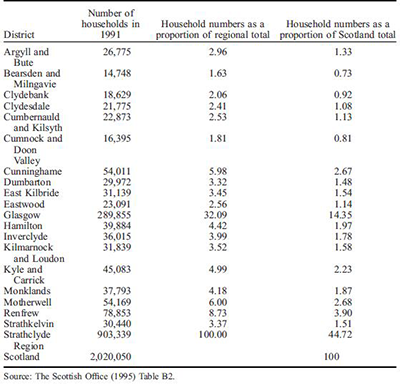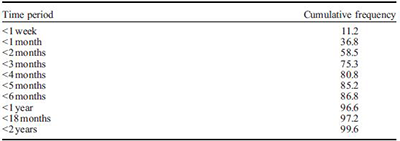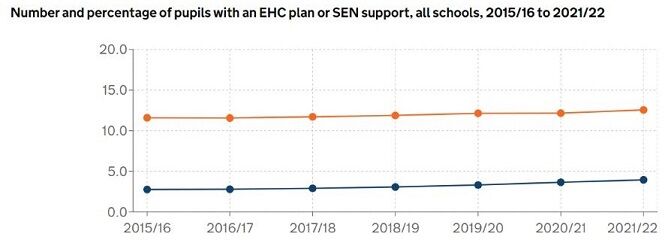In-Text Citations
A citation is the marker you place in the text of your work. The marker you use links to the full reference in your reference list. Often this is done by including the citation in brackets at the appropriate point – usually the end of the sentence. It can also be done by using your citation to introduce a summary or quotation. Be careful with the verb that you use as it indicates the function of the original text. Examples of verbs you might use are in the advice from the Centre for Academic Success on Using Sources and Avoiding Plagiarism.
Contents
- Citing an author's name directly in the text
- Citing an author's name indirectly in the text
- Citing several sources at the same time
- Citing a source with several authors
- Citing sources by the same author(s) in different years
- Citing sources by the same author(s) in the same year
- Citing chapter authors in edited sources
- Citing institutional authors
- Citing missing or anonymous authors
- Citing with no date / an approximate date
- Should I include page numbers in my citations?
- Quoting
- Citing secondary sources
- Citing tables and figures
- Citing Hansard
- Citing religious texts
Citing an author's name directly in the text
Give the author’s surname followed by the date of publication in brackets. If the author has written a chapter in an edited work, cite the chapter author, not the editor(s).
The direct citation style is more personal than the indirect style as it often requires the use of a reporting verb to introduce the work by the author, providing an opportunity for critical analysis.
Example:
↑ Return to the top of the page
Citing an author's name indirectly in the text
Include the author’s surname and year of publication in brackets at the appropriate point – usually the end of the sentence.
Example:
↑ Return to the top of the page
Citing several sources at the same time
1. Citing directly
Put the author’s surname and date of publication in brackets, followed by the next author, and so on.
Example:
2. Citing indirectly
If you wish to refer to more than one source which has the same viewpoint, list them together at the relevant point in the sentence, putting them in brackets with the author's name, followed by the date of publication and separated by a semi-colon. The sources should be cited in alphabetical order in each list.
Example:
↑ Return to the top of the page
Citing a source with several authors
1. Two authors
Separate two authors with “and”.
Examples:
2. Three or more authors
Use “et al.” after the first author.
Examples:
For sources with multiple authors, all the names should be included in the reference list in the order they appear in the document. Use 'and' without a comma to link the last two multiple authors. In your reference list you must include all the authors. However, some articles contain large numbers of authors. In your reference list, give the first ten authors and then use et al. after the tenth. Check the style guide for further information.
↑ Return to the top of the page
Citing sources by the same author(s) in different years
If more than one source from the same author(s) illustrates the same point and the works are published in different years, then the citations should be made in chronological order (i.e. earliest first) separated by a semi-colon.
Direct example:
Indirect examples:
↑ Return to the top of the page
Citing sources by the same author(s) in the same year
If you are citing several sources published by the same author(s) in the same year, they should be differentiated by adding a lower case letter directly after the year, with no space.
Example:
If several works published in the same year are referred to on a single occasion, or an author has made the same point in several publications, they can all be referred to by using lower case letters separated by a semi-colon.
Example:
Junco, R. (2012a) The relationship between frequency of Facebook use, participation in Facebook activities, and student engagement. Computers & Education, 58(1), pp. 162-171. https://doi.org/10.1016/j.compedu.2011.08.004.
Junco, R. (2012b) Too much face and not enough books: the relationship between multiple indices of Facebook use and academic performance. Computers in Human Behavior, 28(1), pp. 187-198. https://doi.org/10.1016/j.chb.2011.08.026.
If you wish to cite several authors with the same surname in the same year add their initials to the citations. So for example, if you wish to cite two sources such as:
Mitchell, J. P. (2002) Ambivalent Europeans: Ritual, memory and the public sphere in Malta. London: Routledge.
Mitchell, W. J. T. (2002) Landscape and Power. 2nd edn. Chicago: University of Chicago Press.
In the text you would cite Mitchell, J. P. (2002) in the text to distinguish the reference from Mitchell, W. J. T. (2002).
↑ Return to the top of the page
Citing chapter authors in edited sources
Sources that appear as a chapter (or some other part of a larger work) that is edited should be cited within your text using the name of the contributing author(s), not the editor of the whole work.
Example:
In the reference list at the end of your document, you should have one entry which should include details of both the chapter author(s) and the editor(s) of the entire work.
Example:
Wittich, W. and Simcock, P. (2019) Aging and combined vision and hearing loss. In: J. Ravenscroft, ed. The Routledge Handbook of Visual Impairment. London: Routledge, pp. 438-456.
↑ Return to the top of the page
Citing institutional authors
If the author is an institution rather than a named person, you can cite the institution name. This is common for publications by health, education, or government institutions.
You can use standard abbreviations for these in the text, provided you write the name fully the first time you cite it, followed by the abbreviation in brackets. The exception to this rule is when an abbreviation forms the full name e.g. BBC, BSI, NHS England.
First citation
Second citation
Both the full name and the abbreviation should then be provided in your reference list:
Organisation for Economic Cooperation and Development (OECD) (2024) Do Adults Have The Skills They Need To Thrive In A Changing World?: Survey of adult skills 2023. Paris: OECD Publishing (OECD skills studies). https://doi.org/10.1787/b263dc5d-en.
↑ Return to the top of the page
Citing missing or anonymous authors
For reference works where there is no named author or obvious editor, current practice is to refer to it in your text by the title of the work, placed in italics and date of publication (page number is optional). This applies to dictionaries, encyclopaedias, religious texts and many current and historical directories.
Examples:
For articles published in professional or trade magazines or published in newspapers, either in print or online, for which there is no obvious author, use the name of the publication rather than the repeated use of Anon in your text and in your reference list.
Examples:
Films, videos and broadcasts are the co-operative product of teams of people. No author or creator is therefore included in the reference. Include the name of the film, video or broadcast in italics in your text citation.
Examples:
If the author's name for a source cannot be found and it is clearly not an institutional publication, use "Anonymous" or "Anon." in the text citation. Every effort should be made to establish the authorship if you intend to use this work as supporting evidence in an academic submission. If the author cannot be identified for reasons of confidentiality, use 'Name withheld'.
Example:
↑ Return to the top of the page
Citing with no date / an approximate date
For items with no date, use “n.d.” For items with an approximate date, use a question mark in place of the unknown date “185?” or an approximate date followed by “ca.” Every effort should be made to establish a date before using it in your academic work.
For works that took multiple years to complete (e.g. artistic works), use the date range.
Examples:
Langley (n.d.) advises...
According to Shahn (ca. 1933-1934) the main...
Hodgkin's (1983-1985) sculpture of...
↑ Return to the top of the page
Should I include page numbers in my citations?
It is compulsory to include the page number(s) with a quote from a source which has numbered pages, such as a book or a journal article. Include the location of the quote from the source even if it is in Roman numerals, is an article with e in front of it or a line number. If the original source does not have page numbers (e.g. a website) then you do not have to include them. If you include a quotation from an ebook, without page numbers, use the number used by the e-reader as a guide to locating your quotation.
The page number(s) should be given after the year, separated by a colon and a space.
Examples:
For films, television programmes and videos, where you are citing text or an image, include a timestamp in the citation.
↑ Return to the top of the page
Quoting
Quoting is a form of citing where you provide text from an external source word for word. If the sources have page numbers then it is compulsory that you provide the relevant page(s) with your quote. This is given after the year, separated by a colon.
1. Short Quotes
Short quotes are up to about 50 words or two sentences. They must be included within double quotation marks, and may be introduced by other text outside the quotation.
Examples:
2. Long quotes
Longer quotations are over about 50 words or two sentences and are indented both left and right but without the quotation marks. Unless the guidelines require the use of a long quotation this method is not recommended for academic writing. Your lecturer/tutor is more interested in what you have to write rather than reading long quotations.
Example:
Srivastava (2007: 54-55) defines Green Supply Chain Management as:
Integrating environmental thinking into supply-chain management, including product design, material sourcing and selection, manufacturing processes, delivery of the final product to the consumers as well as end-of-life management of the product after its useful life.
3. Quoting plays
Use italics for the titles of plays, poems and literature when you cite them. Do not enclose them in inverted commas, for example Kiss Me Kate, Enigma Variations, Hamlet, and Twelfth Night. Character names, such as Pete, Olivia and Hamlet, do not normally go in italics.
Published plays may contain line numbers, particularly in classic texts such as Shakespeare. If they exist these should include the line number(s), but act and scene numbers should always be included. They should be provided after the name of the play, separated by commas.
Short quotes of no more than about 50 words (or about 4 printed lines) should be enclosed in quotation marks and set within the main body of the text.
Example:
There is no need to provide a year of publication in the citation. However, this should be provided in the reference list.
4. Quoting poetry
For poetry, verse and lyrics, line breaks should be marked with an oblique (forward slash).
Example:
A quotation of more than about four lines is considered a long quote and should be indented left and right. There is no need to use inverted commas. If you quote more than four lines set out the poem exactly as it appears in the original. For example, in E. E. Cummings [In Just-]:
it's
spring
and
the
goat-footed
balloonMan whistles
far
and
wee
When quoting dialogue from a dramatic work you need to consider whether the speaking character name is part of the quote. If it is or if you are quoting dialogue from more than one character, use the long quote form and incorporate the usual blank lines between characters' speeches.
↑ Return to the top of the page
Citing secondary sources
You may sometimes come across information about another author's work (a primary source) in the work you are reading (a secondary source) which you would like cite in your own work. This is called second hand citing.
If the passage in the secondary source is not a direct quote, it is recommended that, where possible, you read the primary source for yourself rather than relying on someone else's interpretation of it. For this reason it is best to avoid using second hand citing.
Example of direct citation:
Example of indirect citation:
Ennis is the primary source being cited but which has not been read. Robinson is the secondary source which contains a summary of Ennis' work. It is important to realise that Robinson may have taken Ennis' ideas forward or altered their original meaning in some way.
If the secondary source contains a direct quote from the primary source then there is no need to mention the secondary source at all. You may quote the primary source using the same information: this is not plagiarism. However, as soon as you use any additional information from the secondary source, such as the same reporting verb, you would need to cite it to avoid plagiarism.
The reference list at the end of your document should only contain works that you have read. For our example, only Robinson's work would appear in the reference list:
Robinson, S. R. (2011) Teaching logic and teaching critical thinking: revisiting McPeck. Higher Education Research and Development, 30(3), pp. 275–287.
Note on classical creative works
Sometimes it will be necessary to quote from sources dating from the time of the music, literature or play you are writing about, for example, from treatises, tutor books or dictionaries. It is unlikely that you will always have access to a facsimile of the original source. Instead you may either quote from a modern translation of the whole source or from an author who quotes them in their own book or article. In both cases it will be necessary for you to give your reader details in the text of both the original publication and of the modern source that you have actually used.
Examples:
↑ Return to the top of the page
Citing tables and figures
1. Citing tables
When reproducing selected data, or copying an entire table or figure, you must make reference to the source. A reference within the text to a table or figure taken from someone else's work should include the author and page to enable the reader to identify the data.
All tables should be numbered with an explanatory caption above the table using a centred format.
You should also refer to the table in your text before the table itself.
Example:
Table 1 shows the size of these districts measured in household numbers relative to one another and to Scotland as a whole.
Table1. Local government districts in Strathclyde, 1973-1996.

The source in the above example is given at the bottom of the table. If it is not then it should be included after the caption at the top, using the direct style, introduced by the word "Source:" and including the page number.
Example:
Table 2. Search duration in Strathclyde for new house purchases 1989-1990. Source: Scottish Office (2005: 192).

You need to include the source in your reference list. In the above example, this would appear as:
Scottish Office (1995) Local Government in Scotland. Edinburgh: Scottish Office.
2. Citing figures
Figures should be labelled and numbered with an explanatory caption and the caption positioned below the figure, using a centred format.
In the text you should also refer to the figure before you reproduce the figure.
Example:
Figure 1 shows that the number of pupils with an EHC plan and the number of pupils with SEN support have both increased since the 2015-16 school year.

Figure 1. Percentage of pupils with an ENC plan or SEN support, 2015/16 to 2021/22. Source: Department of Education (2022).
In the reference list the reference to this figure would appear as:
Department for Education (2022) Special Educational Needs in England: January 2022. Available at: https://explore-education-statistics.service.gov.uk/find-statistics/special-educational-needs-in-england/2021-22 [Accessed 8 September 2022].
If the source of the data is not from the creator of the figure, but was obtained from another source, it becomes a secondary citation.
↑ Return to the top of the page
Citing Hansard
Hansard provides a record of proceedings of the UK Parliament in the Chamber of the House of Commons, the sub-chamber in Westminster Hall and House of Commons General Committees.
The BCU Harvard style for citing Hansard conforms to the House of Commons Information Office Factsheet G17.
Hansard citations should not be included in your reference list as their citation contains the entire reference.
The word "Hansard" should be provided in italics, then a comma, then the correct Hansard citation format. For more information, see the Referencing Hansard pages.
Examples:
↑ Return to the top of the page
Citing religious texts
Convention dictates that you do not use page numbers with religious texts, just chapter and verse (with no space after the chapter number):
The best known Rabbinic statement of the doctrine of the resurrection is a warning dating from the Mishnaic period (AD 70-200):
these are the ones who have no share in the world to come: he that says that there is no resurrection of the dead [prescribed in the Law], and he that says the Law is not from Heaven, and an Epicurean. Rabbi Akiba says: Also he that reads the heretical books, or that utters charm over a wound… Abba Saul says: Also he that pronounces the Name with its proper letters (mSanh 10.1).